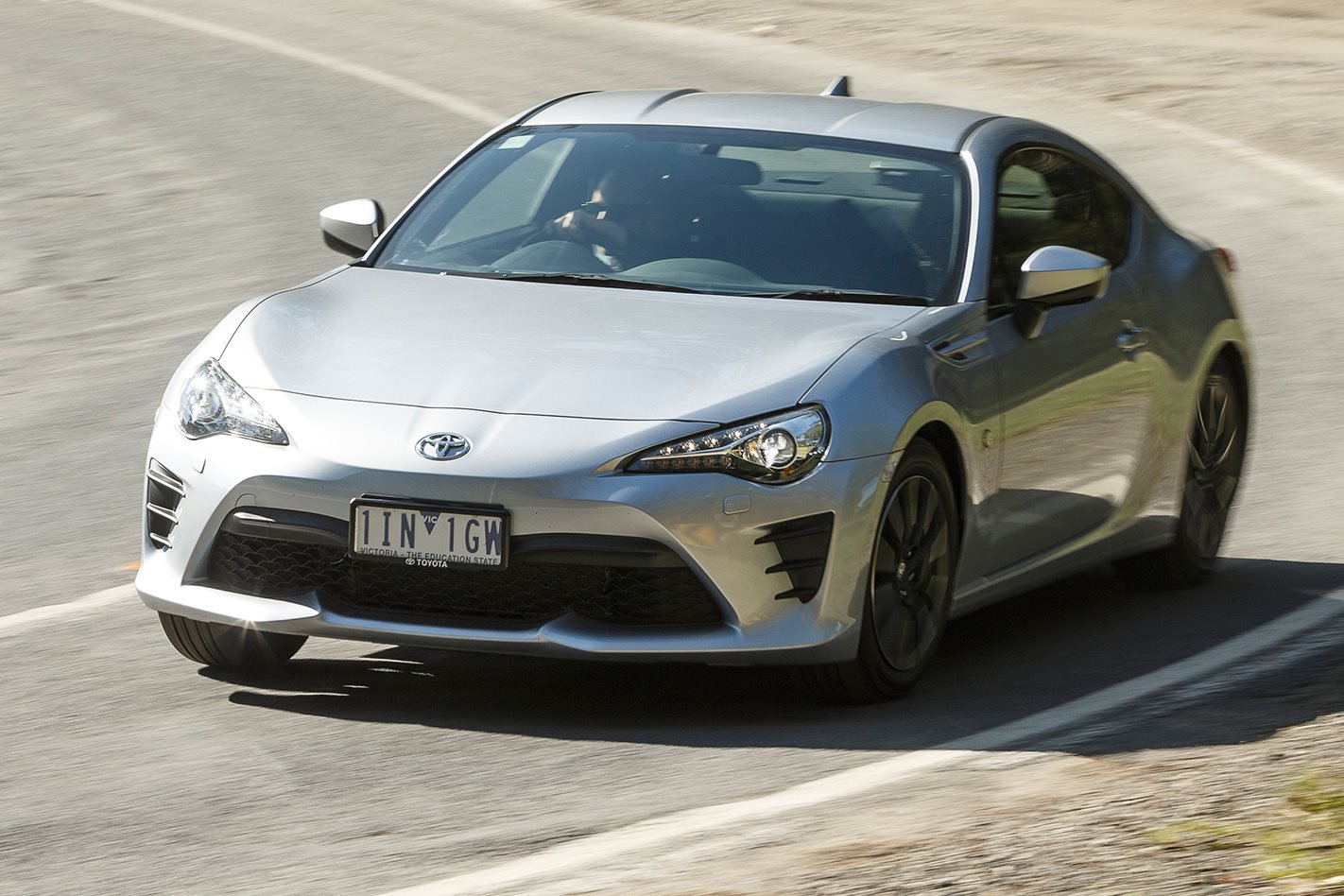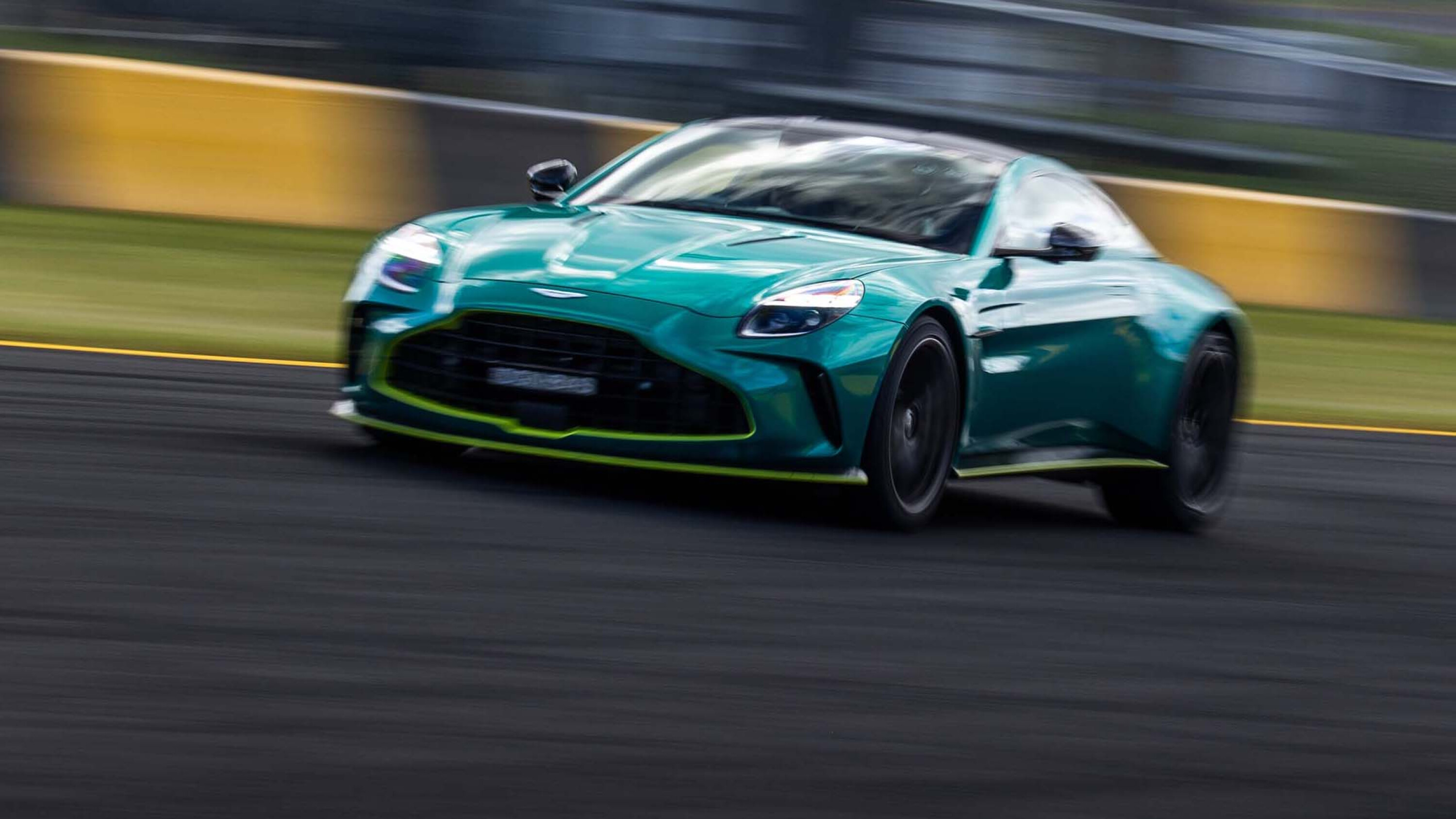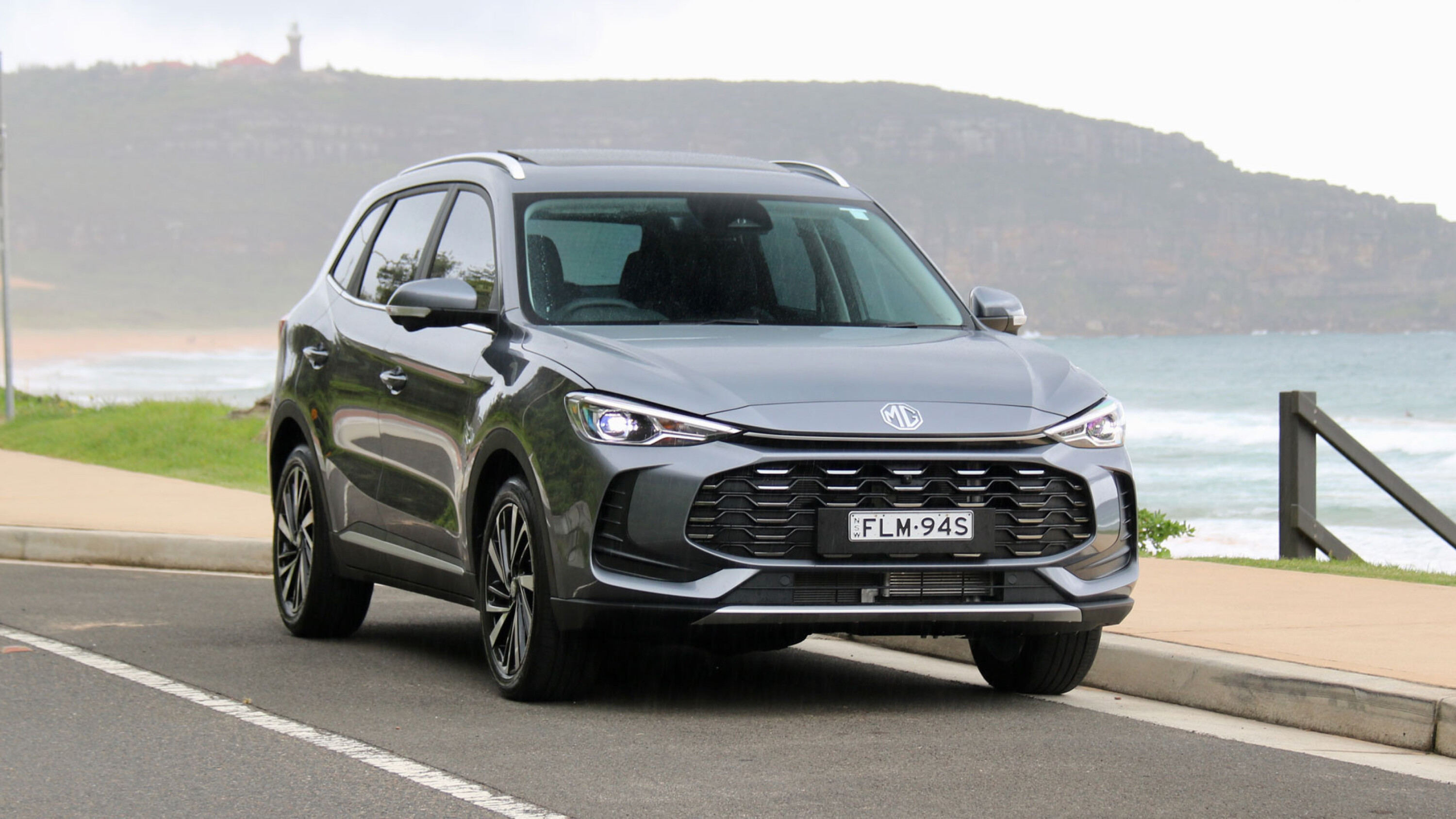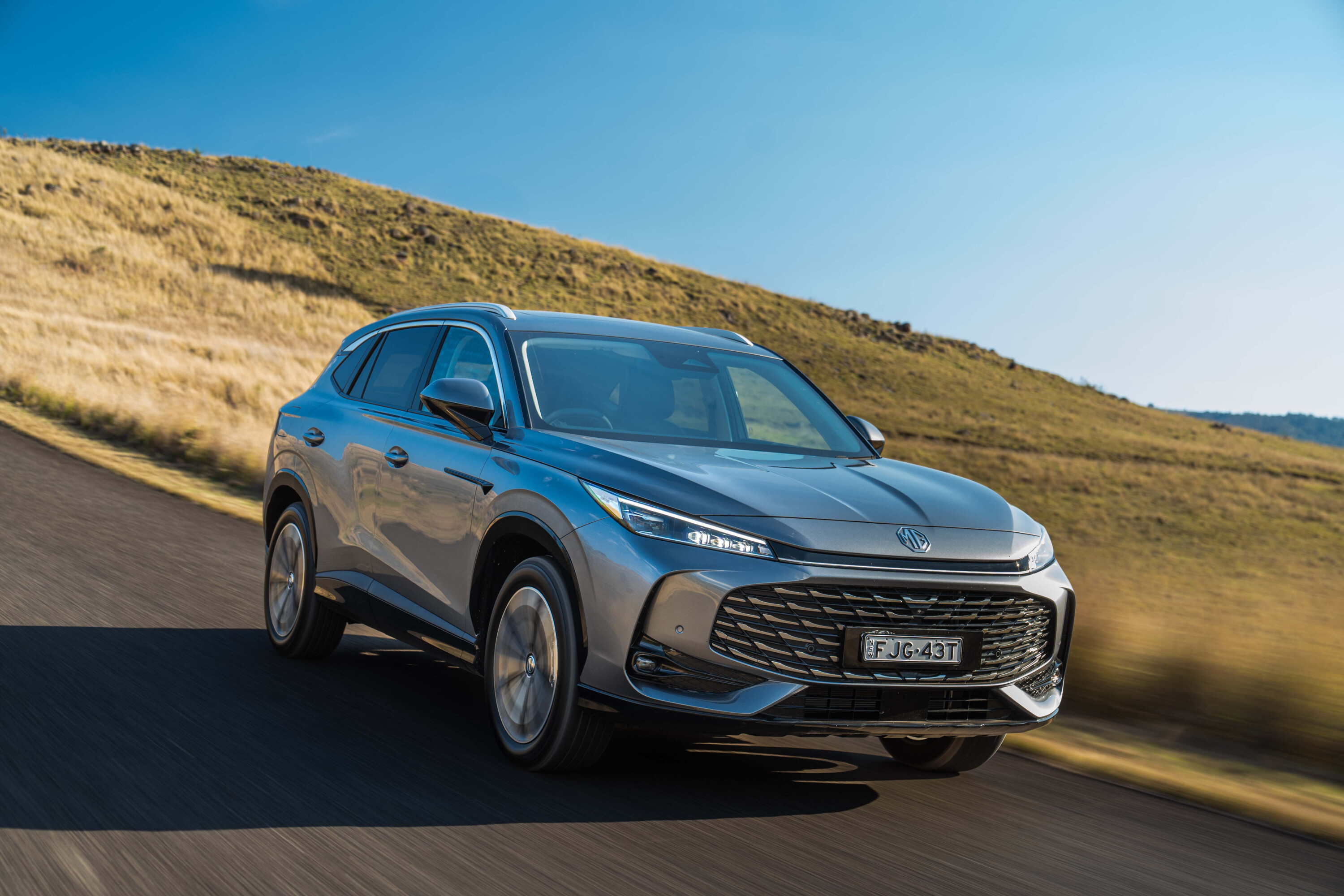- Introduction: Improving the breed
- Update 1: Daily duty
- Update 2: ‘S’ for Suspension
- Update 3: League of Legends
- Update 4: Conclusion
Introduction: Improving the breed
THE ORIGINAL Toyota 86, launched in 2012, was always a tricky car to live with on a daily basis.
Busy, jarring ride; a cost-conscious interior and a live, 24/7 broadcast of the bitumen beneath you – vibration, noise and all. But you put up with it, because when the road turned twisty, nothing less than $50,000 satisfied or pleased, from a driving perspective, like the 86, with sublime steering, nimble handling and that oh-so-sweet rear-drive feeling.
The five per cent spent on far-flung, twisty roads, more than justified the other 95 per cent. Same applied, of course, to the Subaru BRZ. Yet it’s interesting, how many 86 owners do you see driving around who wouldn’t know what that five per cent feels like, yet put up with the 95 per cent on a daily basis?

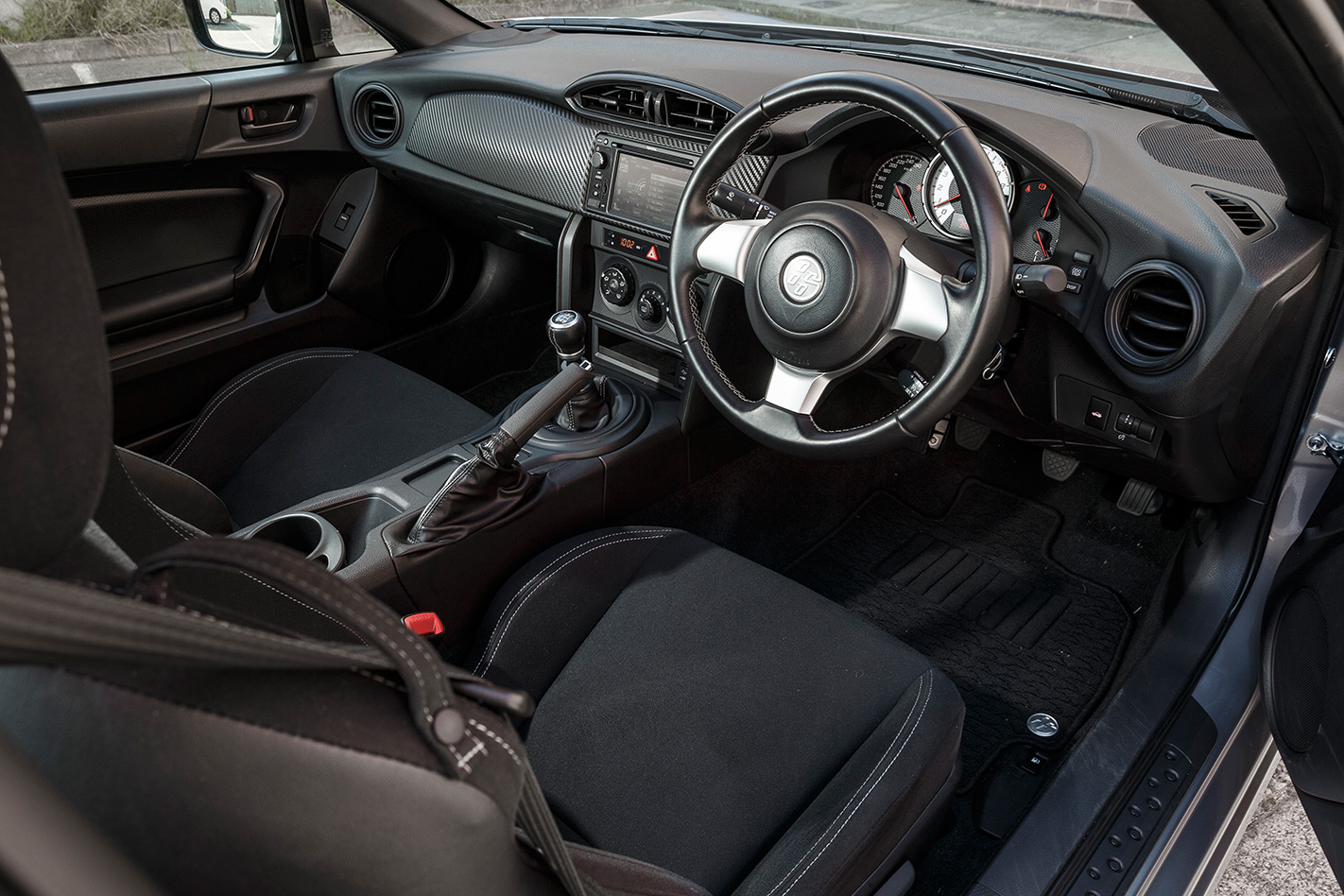
This could be the case, ever so delicately, with the new 2017 Toyota 86. A major freshen up to keep it rolling off showroom floors, the 86 scores a restyled front bumper; updated headlights and taillights; a new 17-inch wheel design for the GTS; and spruced-up interiors including a new 362mm steering wheel, the smallest fitted to any Toyota.
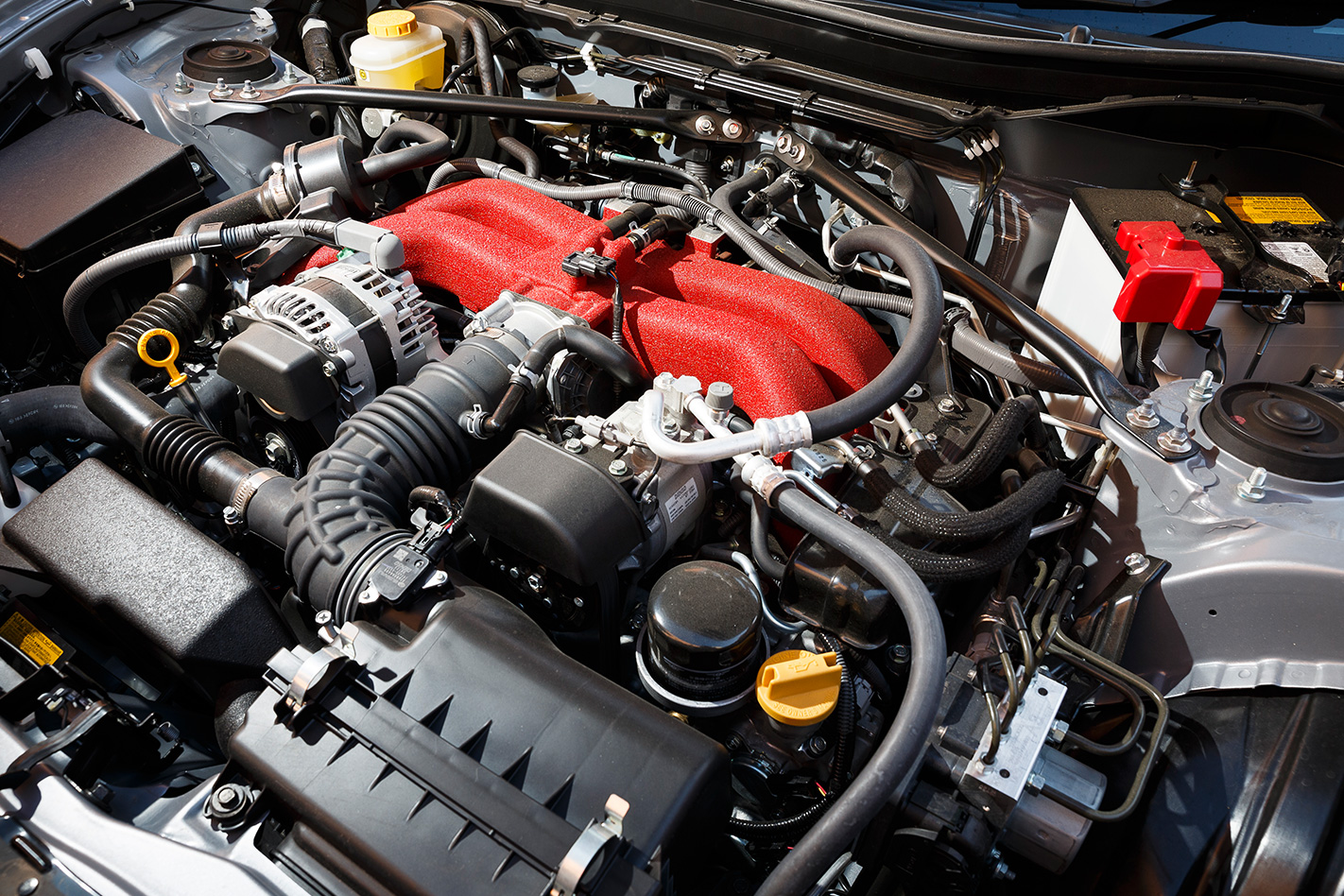
But there are two other fairly major changes: brand-new chassis electronics including a much-needed, ‘half-off’ Track mode; and some interesting changes to the suspension, including an overhaul of the dampers and a softening, by 15 per cent, of the rear springs (and a 1mm thinner swaybar), and a 10 per cent firming of the fronts.
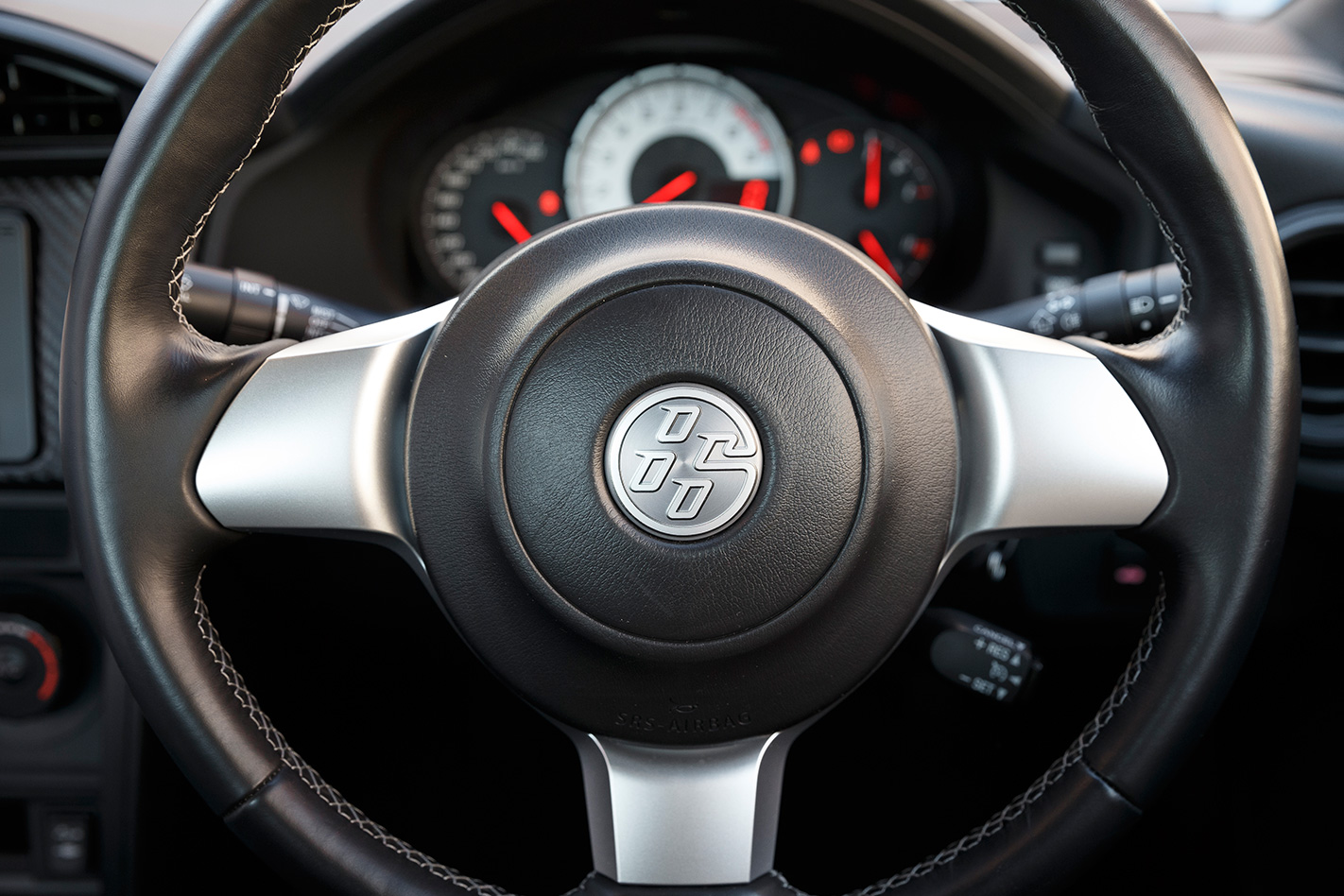
And how is the 86 ageing in the general performance car world? We’ve got three months in a base GT at which point we swap for three more in a GTS. And by the end of it, we’ll have a pretty good idea if Toyota’s changes have made the 86 even sweeter, or a new flavour nobody was asking for.
MONTH ONE
Claimed combined consumption: 8.4L/100KM Starting ODO: 3500KM Duration: 6 months (sort of)
Liked: So much of it feels right Disliked: Most points under 5000rpm
Update 1: Daily duty
How the 86 became a much nicer daily driver
MONTH TWO with Toyota’s updated 86 GT and, interestingly, we’ve not (willingly) spurned it in the car park for more comfortable alternatives – like we might have, once the novelty had long worn off, with the ‘original’ car.
That’s because the 86 is now a much easier gadget to live with on a daily basis, owing mostly to the softened, more grown-up ride making it more than bearable over bumps at urban speeds. It seems to have come at a small cost, however, for those only interested in pure, uncompromised driving thrills.
We might try to find a stock, original car for some back-to-backs later, as we’re talking very minor differences here, but a decent drive in our little 86 GT made us wonder if the slightly softer suspension has, by the smallest amount, blunted rather than sharpened the 86’s responses.

From a driving perspective, the tyres don’t feel as fit for purpose as the rest of the car, but fortunately this is, of course, easily fixed. All that aside, we’re relieved to report that the updated 86, and BRZ, remain the most fun cars you can buy new for under $40K.
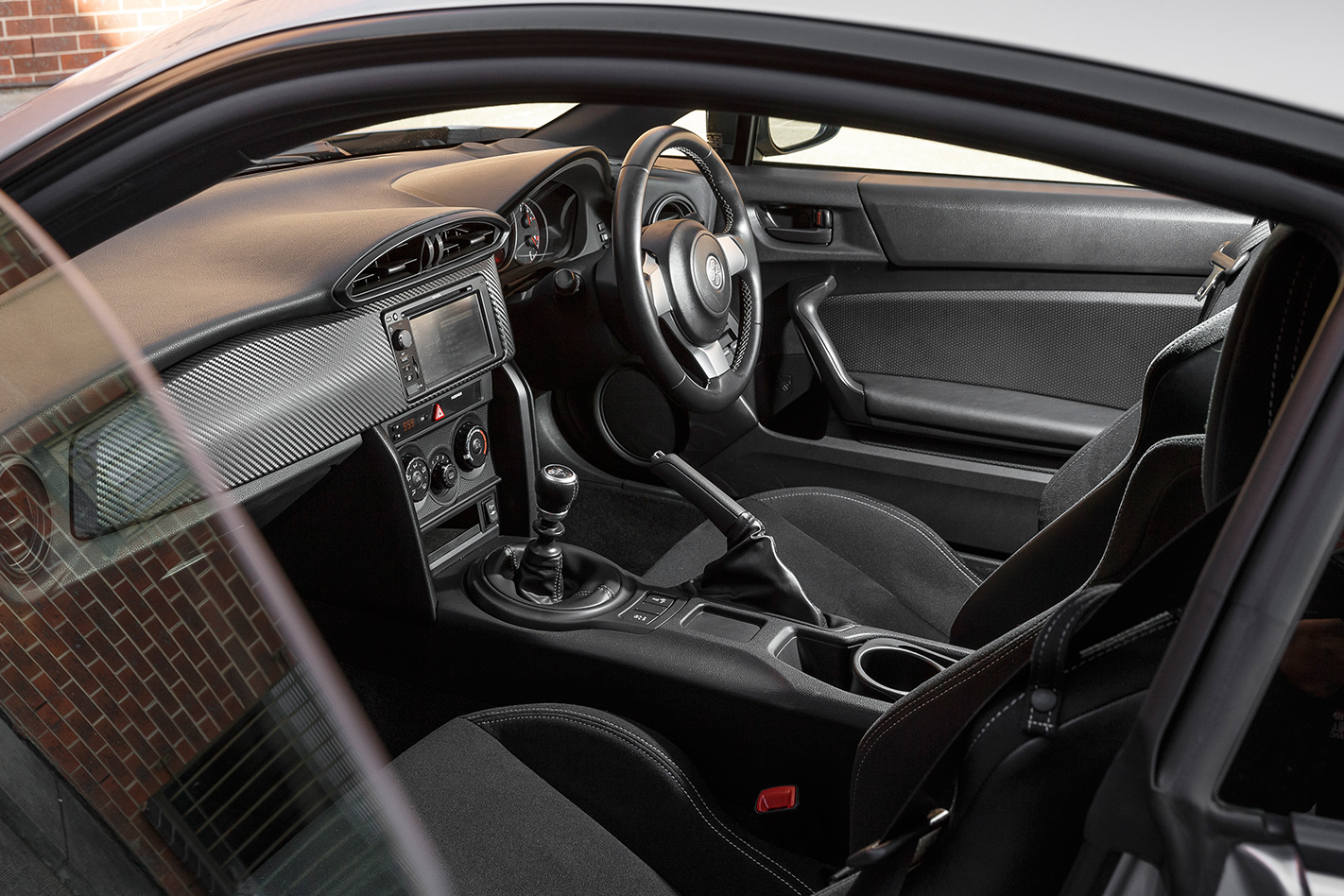
Or not, if you own it. We had forgotten just how fun these cars can be. The front end remains one of the best in any sports car on sale; the seats are huggy; the driving position spot-on; there’s throttle-oversteer on command, provided the rear tyres already have some lateral load; and the pedals make heel-and-toeing a breeze.
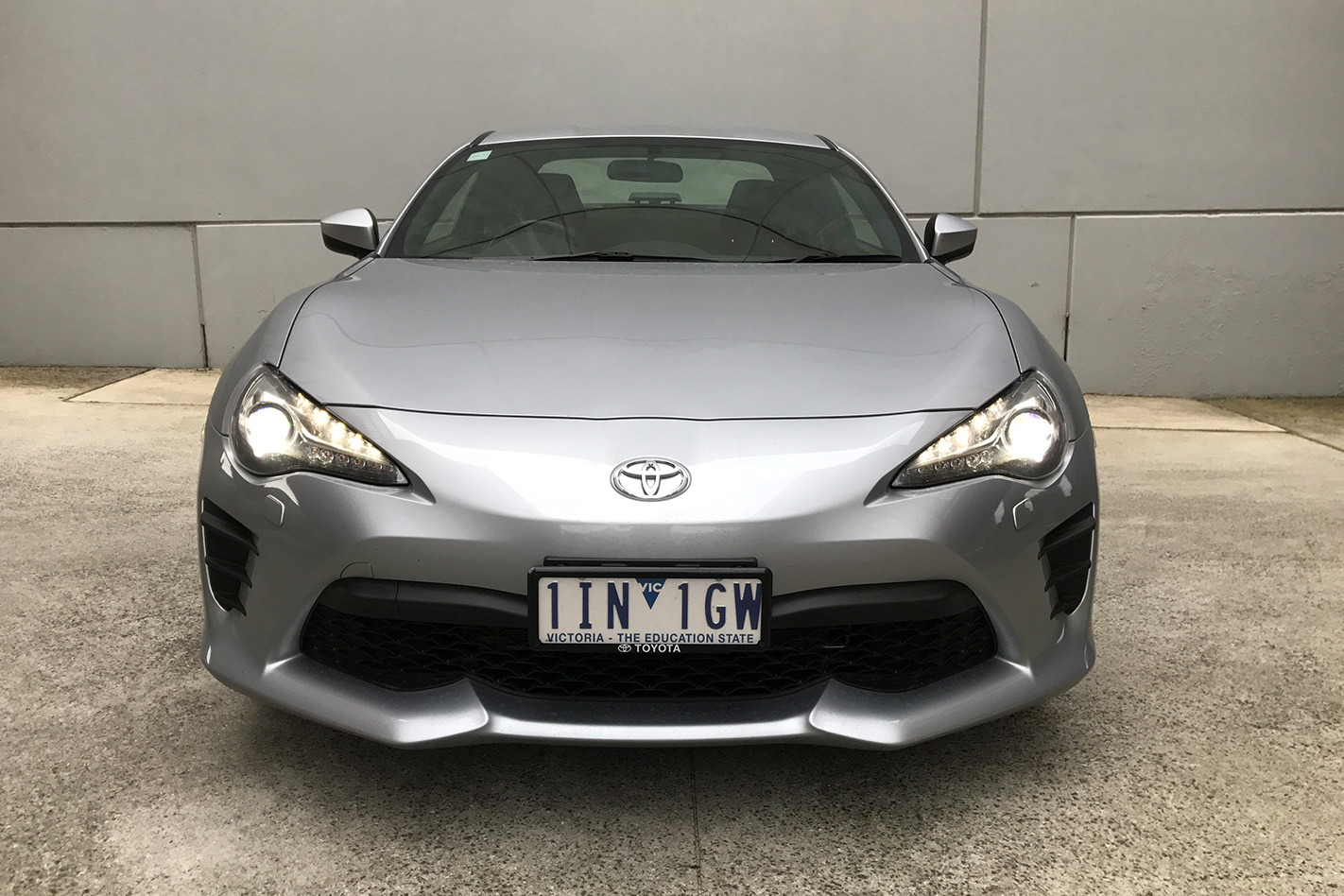
However, for many owners, even Track mode might begin to feel a tad conservative, and it’s testament to the 86’s friendliness that you may feel entirely confident turning the ESP all the way off.
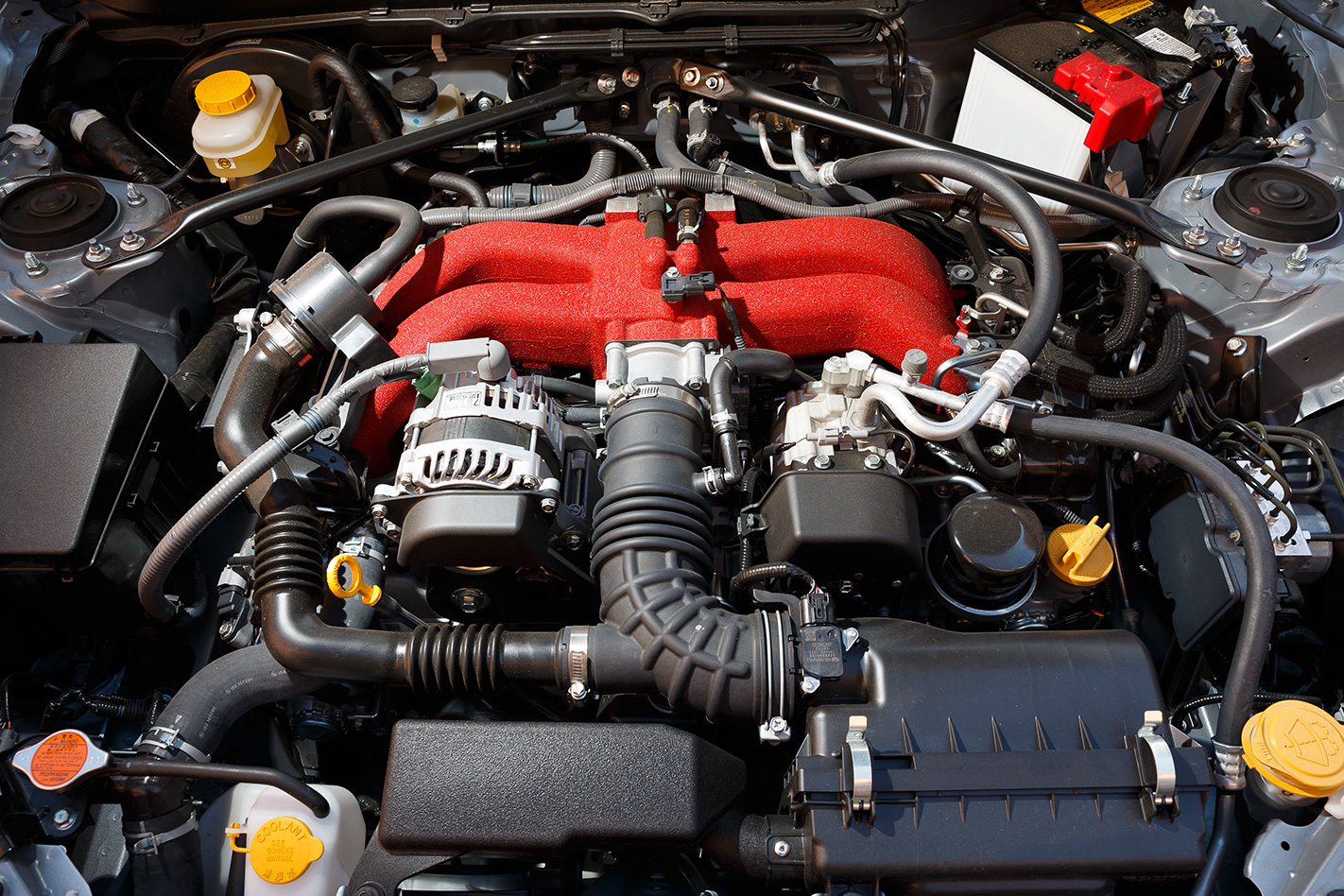
And the interior of the GT does feel a tad less plain now with the double-DIN TFT infotainment display – effectively from the GTS, sans satnav. Then there’s the cruise control, indicator and wiper stalks whose gizzards would not surprise us to share part numbers with Toyotas from the early 2000s.

Even if, it seems, it’s at a slight cost to the other five.
MONTH TWO
Fuel this month: 9.2l/100km Average: 9.2l/100km Distance this month: 882km Total: 4382km Liked: Softer ride helps daily driving
Liked: Softer ride helps daily driving Disliked: The standard tyres. They’re horrible Favourite moment: Sideways all day on track
Update 2: ‘S’ for Suspension
We swap Toyota 86 GT for GTS
YOUR eyes don’t deceive you – like a Pokemon, our Toyota 86 long-termer has evolved from a silver GT to a Velocity Orange GTS, as we continue to comprehensively evaluate the most recent updates to the 86 range.
And it took about two minutes of driving for a swear word to come out of our mouths. Toyota has not quietly revolutionised the 86’s ride as we had concluded from driving the GT last month.
It seems we should have waited until driving the GTS on 17-inch, 45-profile tyres before foolishly announcing – having only driven the GT on 16-inch, 55-profile tyres – that the difference in ride is game-changing for the 86’s daily driveability.
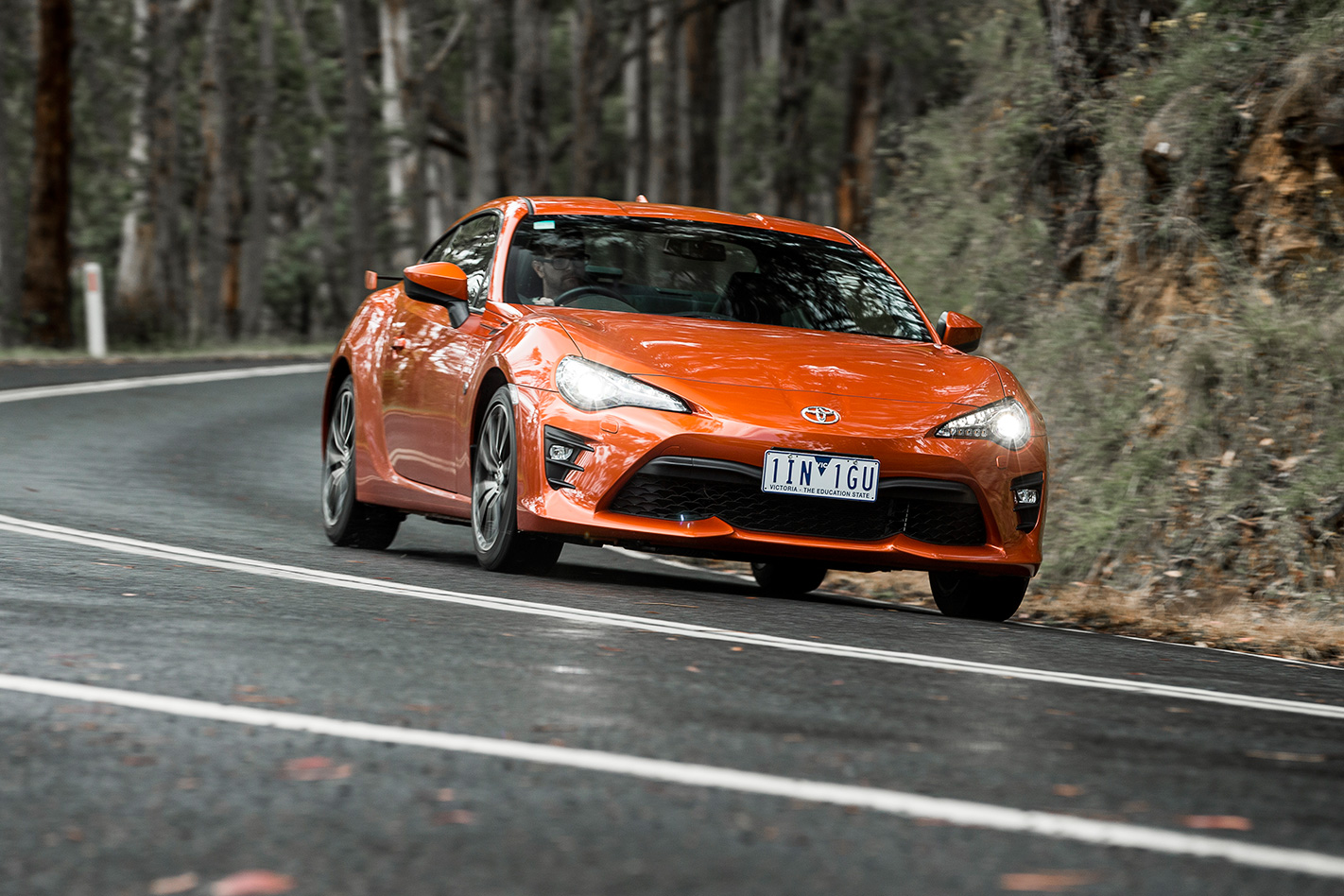
Mea culpa. Alas, as we jiggled along in the GTS, we were pleased to discover many positive things to talk about in the 86’s change to 2017-spec. It seems Toyota has listened to the many and unrelenting criticisms of the 86’s cheap and cheerful interior, apparently spending a lot of energy trying to jazz it up.
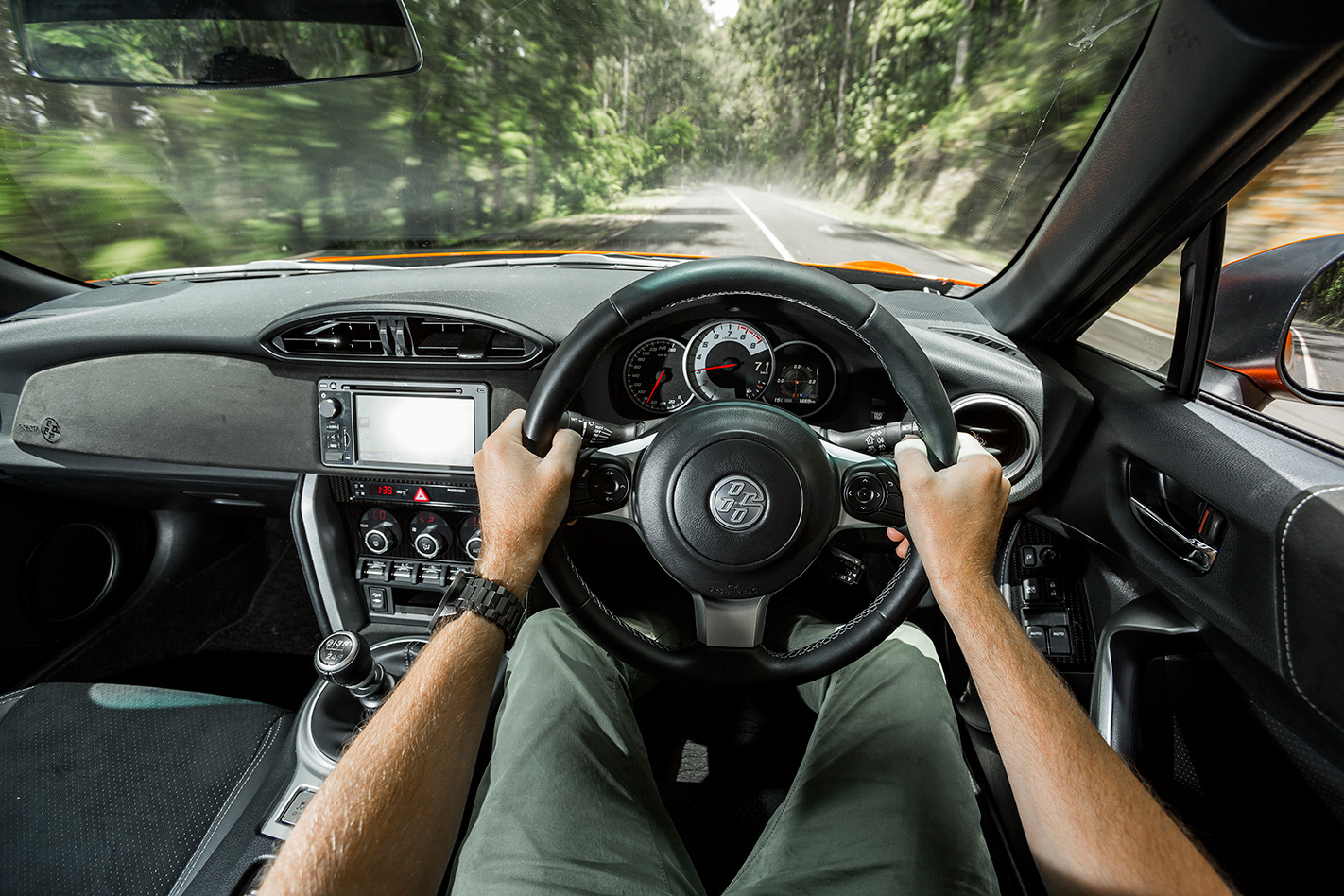
Plainly, the bulk of the 2017 updates was sunk into the GTS – not the GT. From the perspective of a long-term test, the GTS is much nicer than the GT owing to numerous little conveniences that add up. Keyless entry, seat heaters, a better infotainment system (although still maddeningly unintuitive, with ugly menus, and slow to respond to inputs).
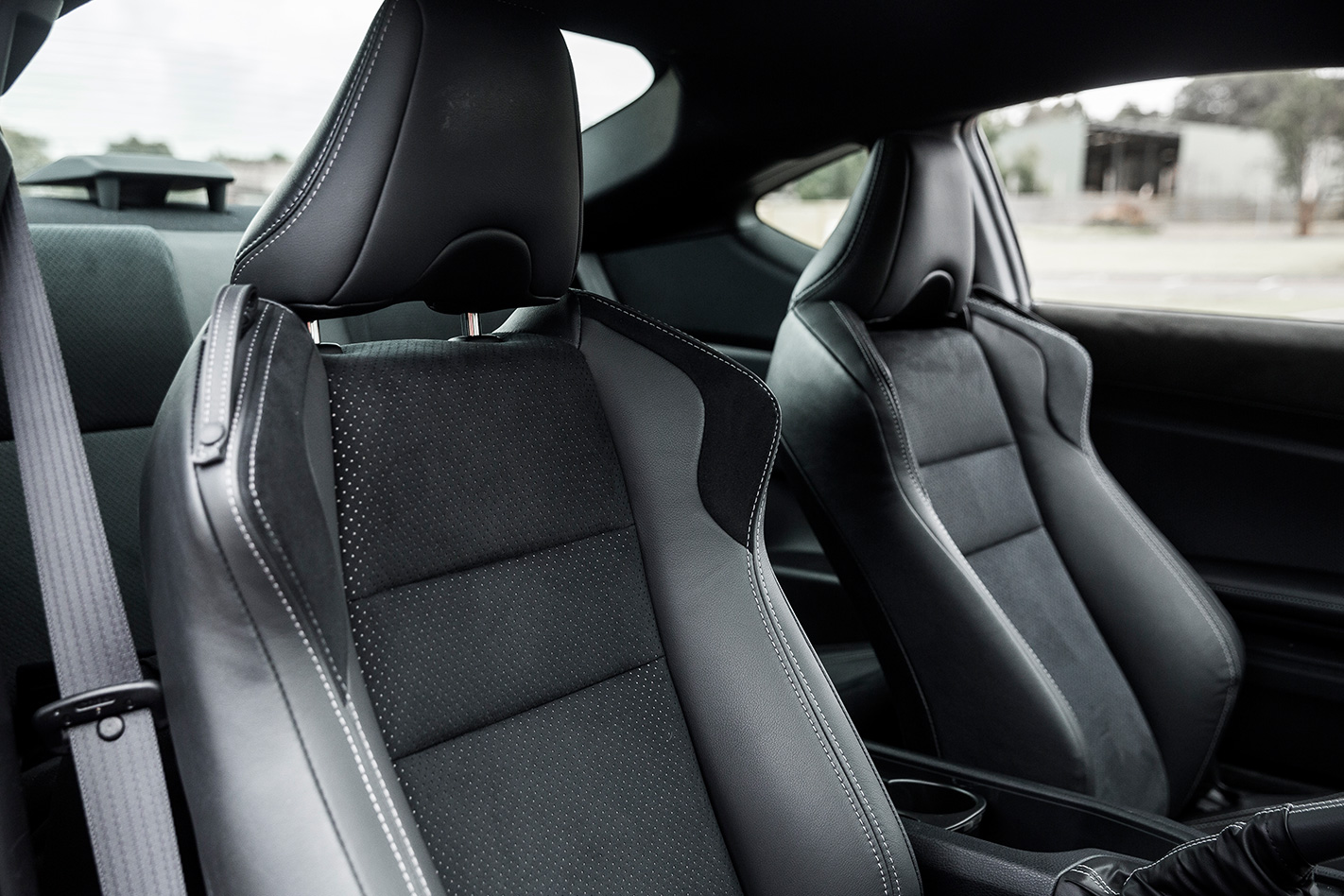
If you are buying an 86 as a toy and intend to show it no mercy, you may as well just get the GT. And put in some rubber floor mats. To our eyes it looks better, too. While in orange the new front bar does make the 86 look a little like a halloween jack-o-lantern (impossible to unsee –sorry) it’s an effective freshen-up, including the new 17s.
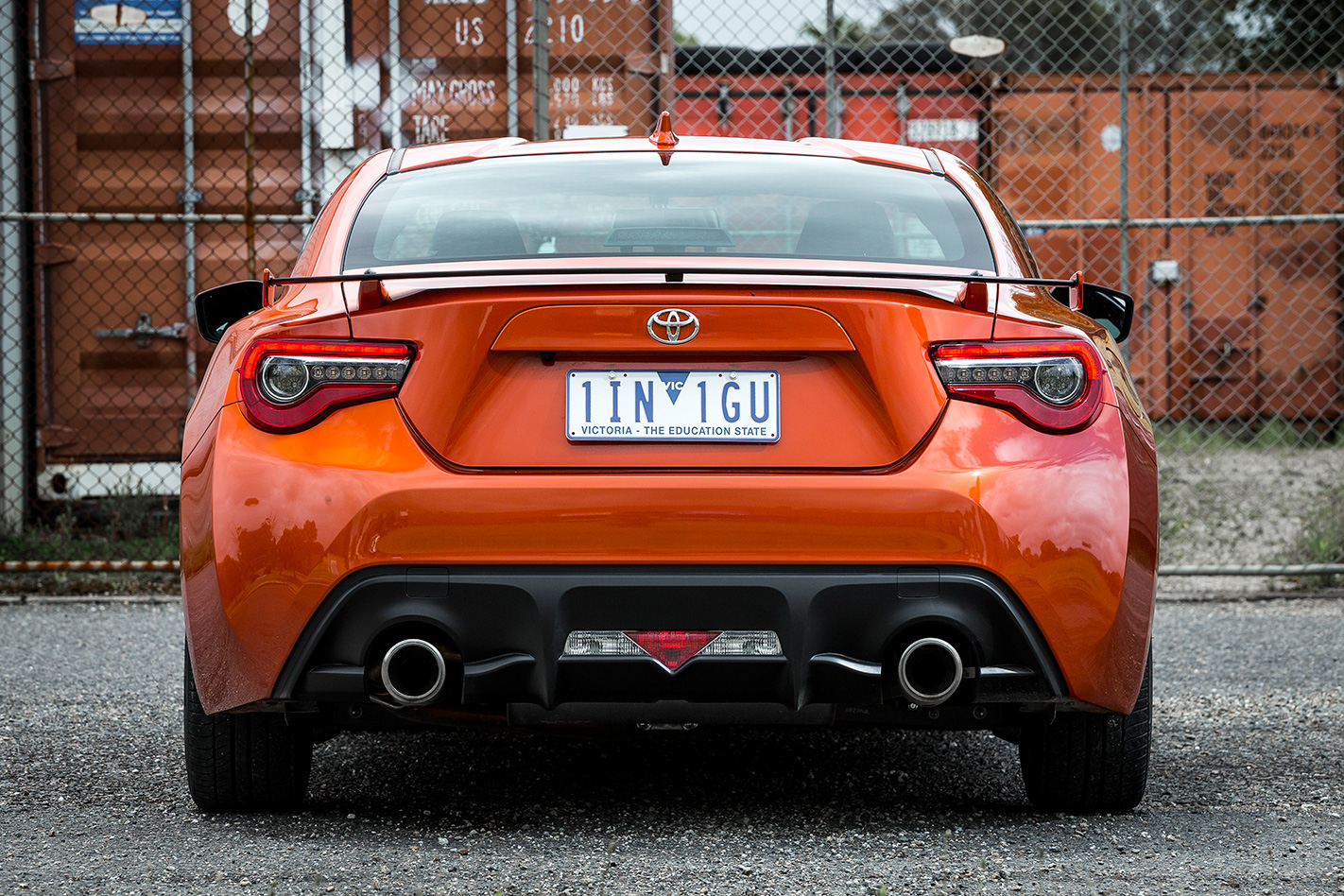
Next month we broaden scope and explain why the new 86 is not, to our minds, the spiritual successor to the legendary AE86.
MONTH THREE
Fuel this month: 10.8l/100km Average: 10.0l/100km Distance this month: 229km
Liked: GTS interior now a little nicer Disliked: We were wrong about the ride…
Update 3: League of Legends
There’s one area in which the new 86 can’t live up to the legend
THE Toyota 86 has a very different DNA to its spiritual forebear, the AE86 Sprinter, if you ask me.
What would I know? I own one – a 1984 Trueno GT-APEX with the revered 1.6-litre inline-4 4A-GE, the engine Toyota built that very closely resembled the legendary Ford Cosworth BDA 1.6-litre inline-4 of the time.
With the same bore and stroke (81 x 77mm) and similar head designs, both engines, in race trim, would produce similar outputs at similar rpms.
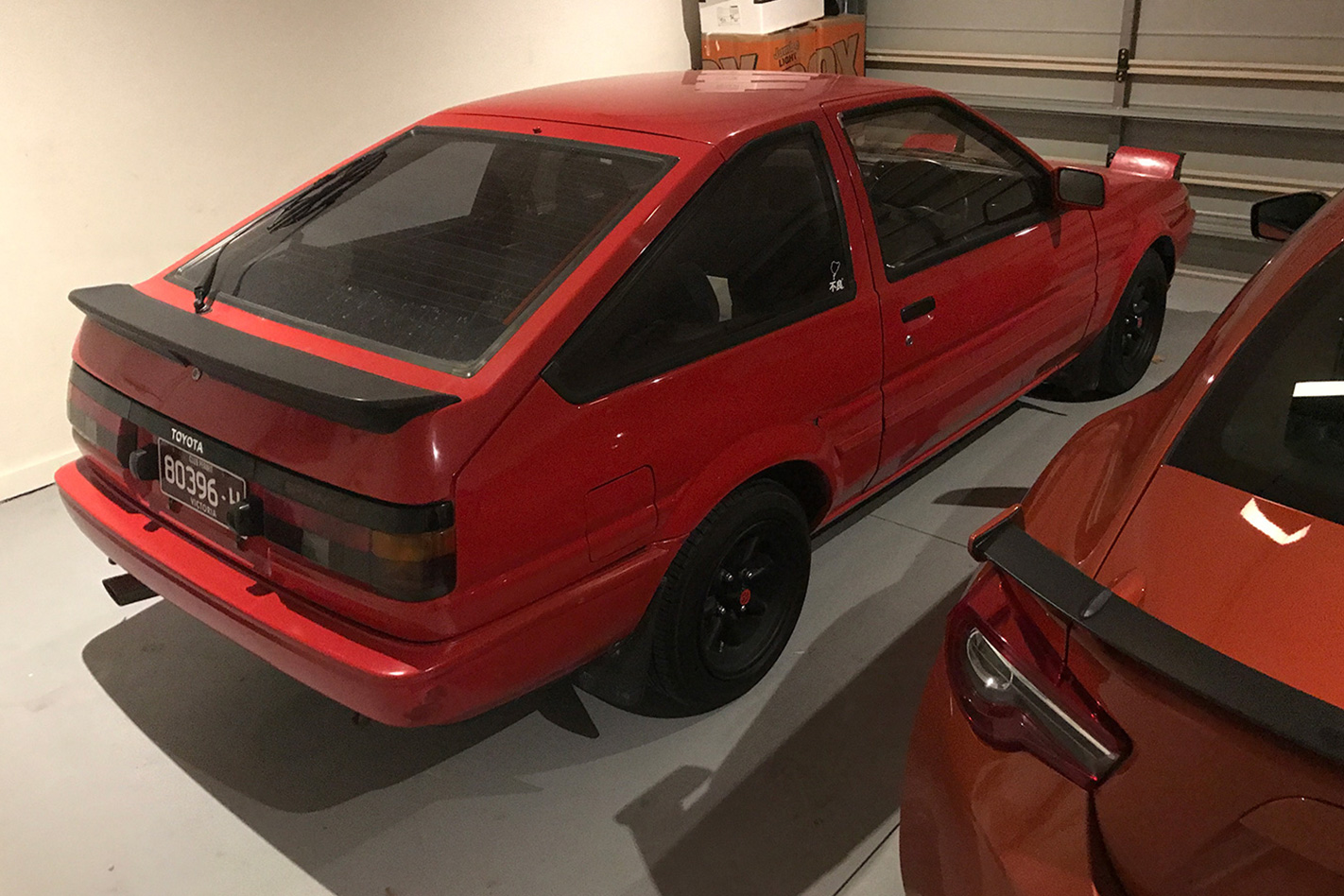
Don’t get us wrong, with 152kW/212Nm it more than does the job, but in a more functional than emotional manner. The sound in particular will hardly raise the hairs on the back of your neck. That is, unlike the 4A-GE. A good 50 per cent of why this car is the cult classic that it is has to do with the engine.
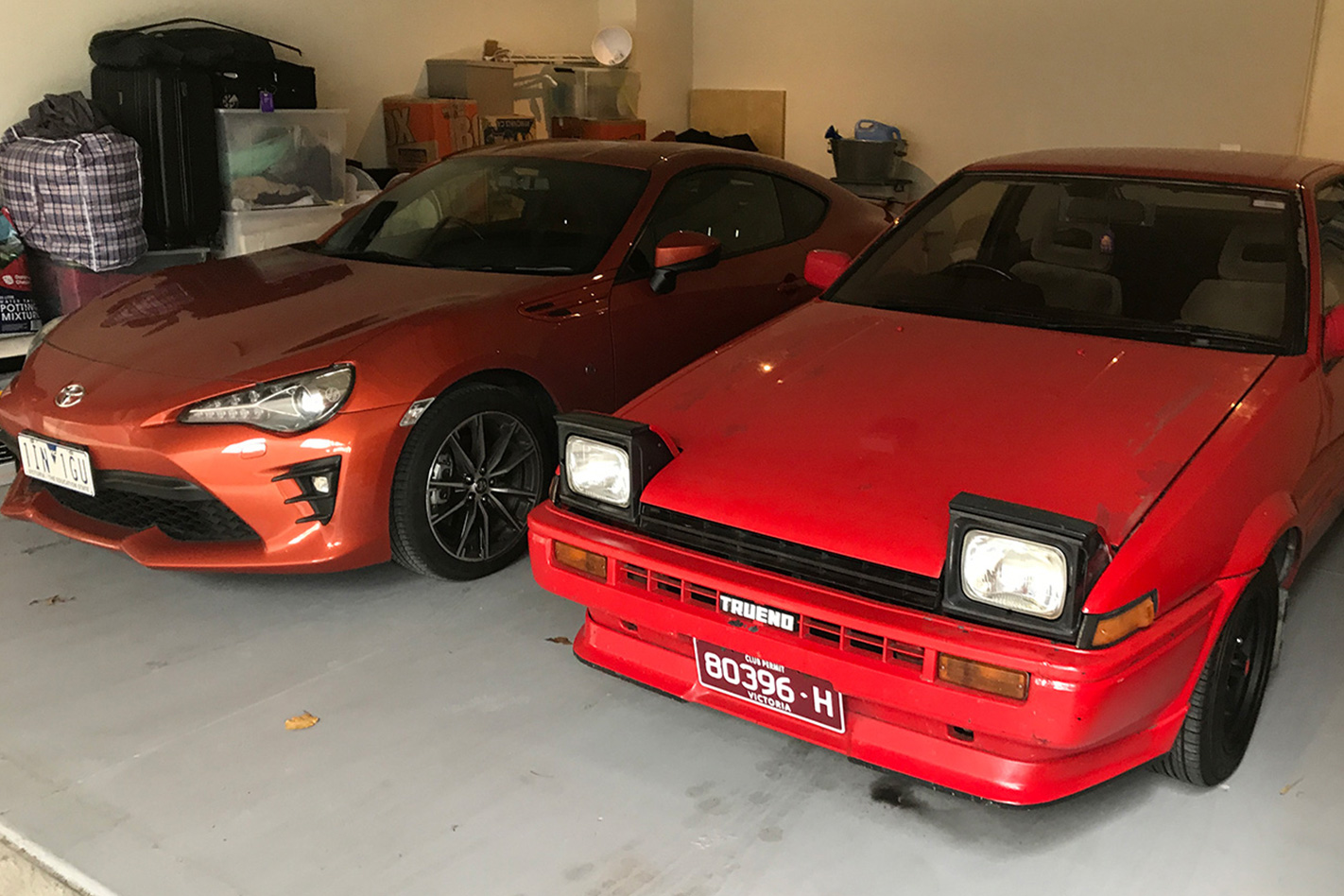
Of course, the little AE86 isn’t going to win many drag races because despite its screaming atmo engine making it feel fast, a new Toyota 86 would smoke it in a straight line. And the new 86 itself is hardly your first choice for the Friday night drags. Should Toyota have used an inline-4 in its new 86 instead of the boxer?
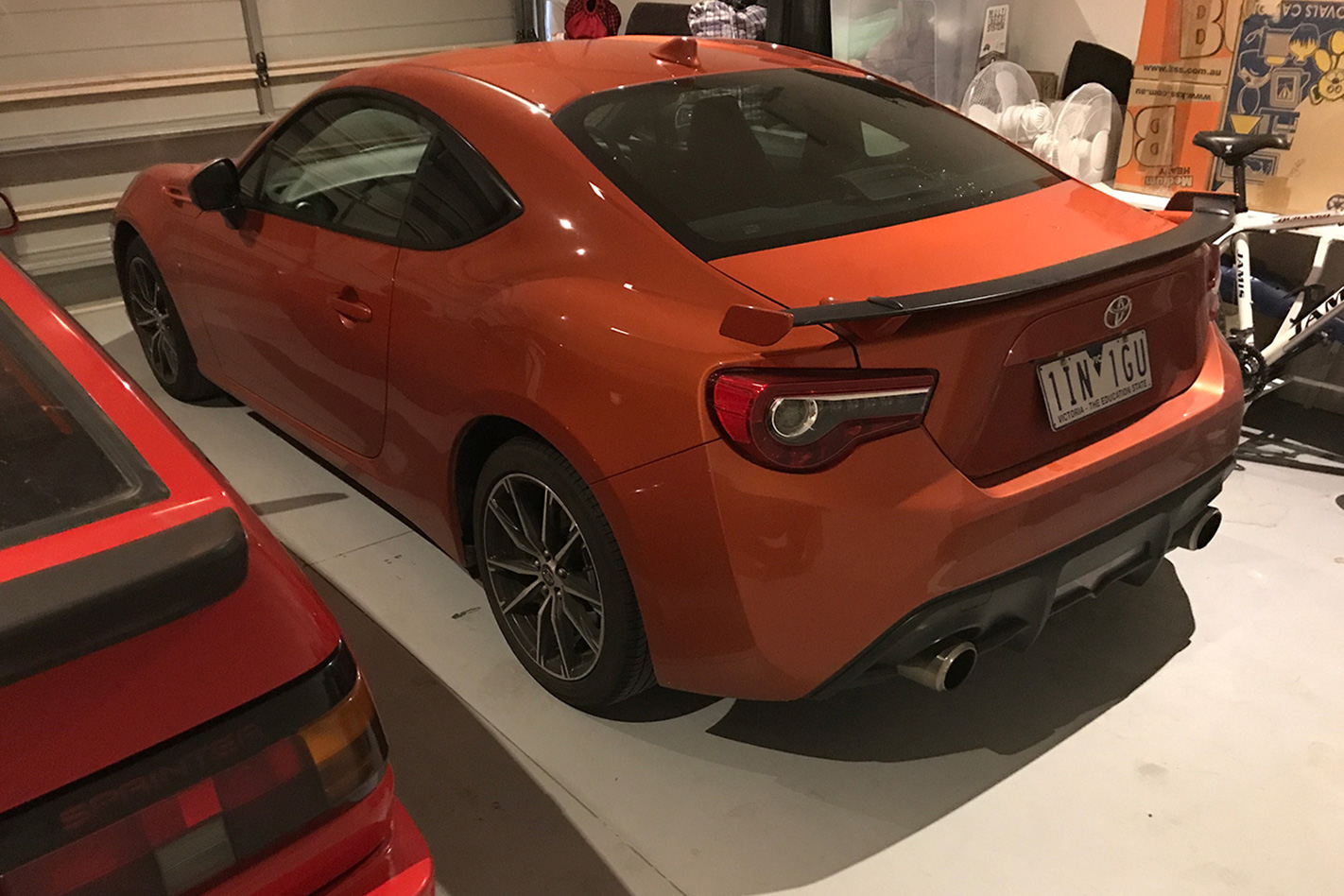
And part of the 86 and BRZ’s sublime front end surely has much to do with the boxer engine’s lower centre of gravity. If it’s the engine that an AE86 owner would find most underwhelming about a new 86, they’ll be blown away by the chassis. The AE86 is a surprisingly agile car with a lightness and willingness to its handling unexpected for its age.
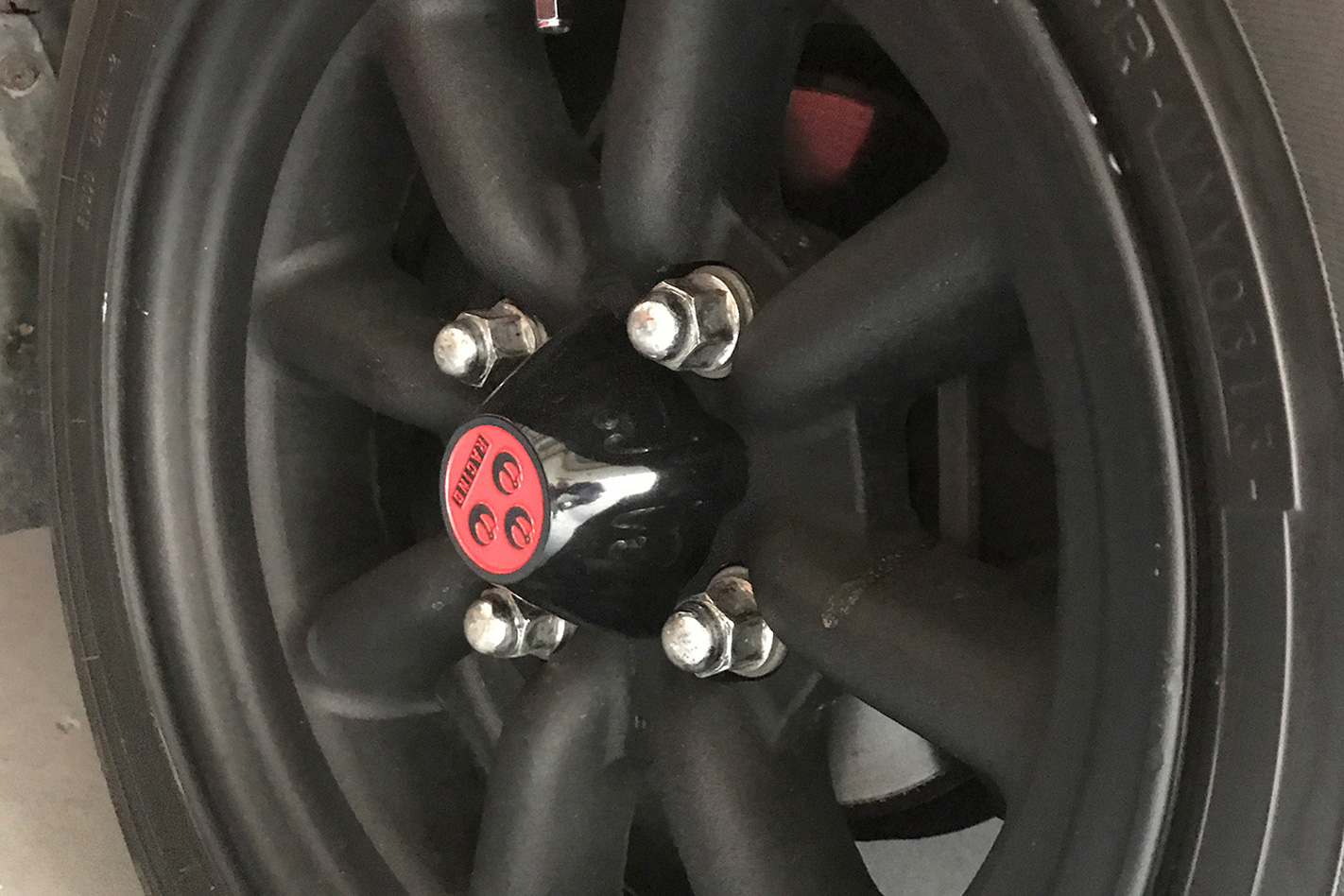
The same handling compliments can be given to the 86 and BRZ – and it’s the strand that most strongly connects new to old. With lithe and eager handling, fantastic steering and an obvious rear-drive character, the 86 will have you hunting down corners. As has been much publicised.
Like the DNA of two parents into one child, perhaps it was just unlucky the Toyota 86 ended up with the Subaru engine. The soul of the AE86 lives on in the seat and steering wheel of the new 86, just not the accelerator pedal. Or tail pipe.
MONTH FOUR
Fuel this month: 9.6l/100km Average: 9.9l/100km Distance this month: 866km
Liked: AE86-like handling and fun Disliked: Engine doesn’t howl like a 4A-GE
Update 4: Conclusion
After five months we farewell our Toyota 86
Five instalments and more than 5000km across two variants of Toyota’s updated-for-2017 86 and we can report that it’s basically the same car as launched in 2012, but the interior tweaks, concentrated on the GTS, make it just that much nicer to live with.
And the brand new chassis electronics – ESP and traction control – are game-changing in that more people who buy the 86 are able to enjoy its wonderful handling with a safety net intact. Previously the electronics would intervene so clumsily and abruptly you had to turn them off to properly enjoy a fast drive.
Which would leave you exposed. Fortunately, not anymore. Aside from those two things, the updated 86 really just looks a little nicer (thanks to a new front bar, rear spoiler and 17-inch wheel design) and goes a little harder, thanks to bumped-up outputs (up 5kW and 7Nm to 152kW/212Nm) and a shorter final drive in the manual models.
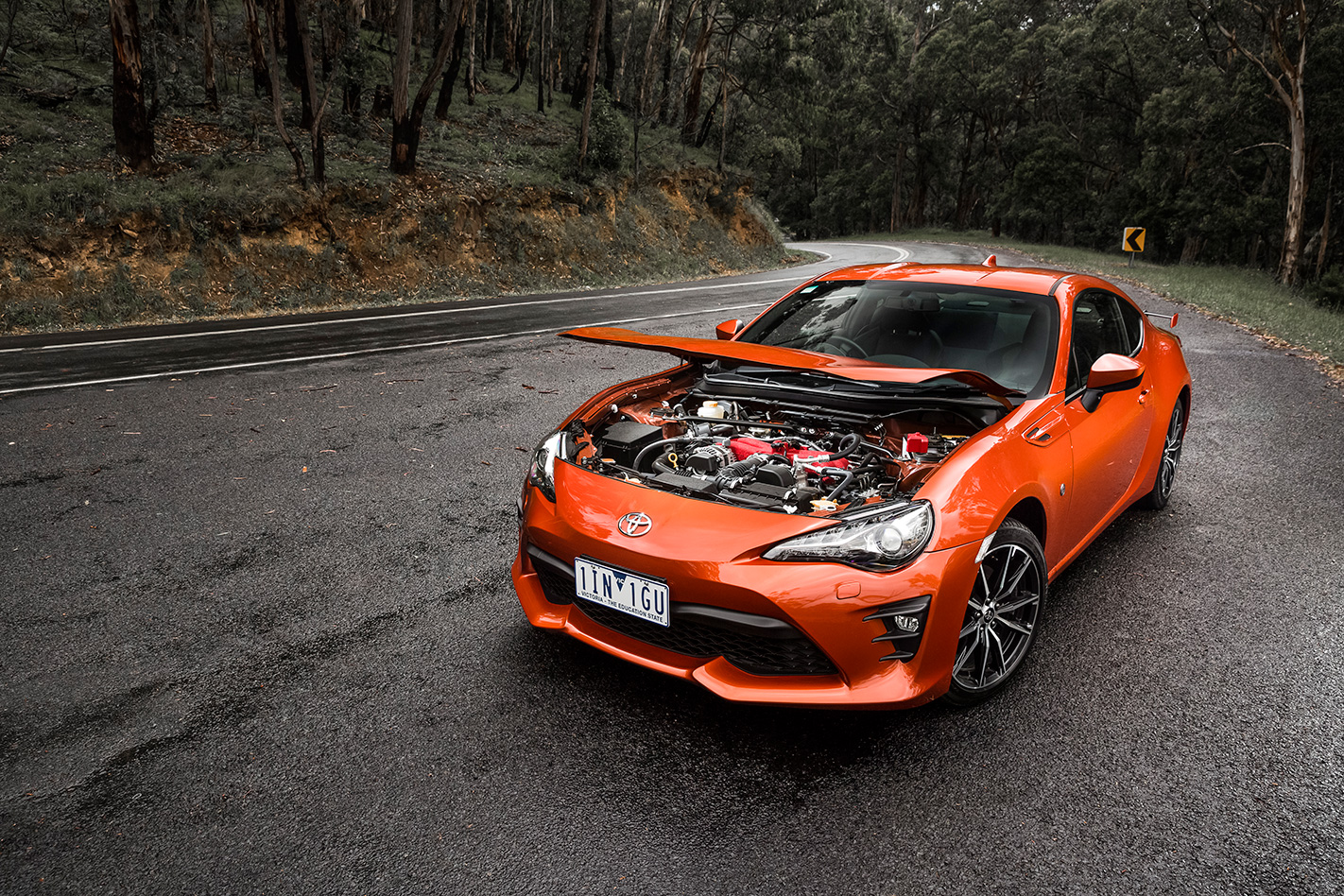
The engine is still as dull, uninspiring-sounding and limp below 6500rpm as ever (7400rpm redline) and indeed it remains a gripe of the car. While it does the job in the higher revs, making for a surprisingly quick clip, it is very difficult to feel affection for it.
But it’s more than made up for by the handling. If you love driving, particularly in a rear-drive setting, the 86 is still easily one the most fun and satisfying cornering devices under $100,000. There is a slight trade-off, and another long-term gripe – this is still a bumpy-riding car.
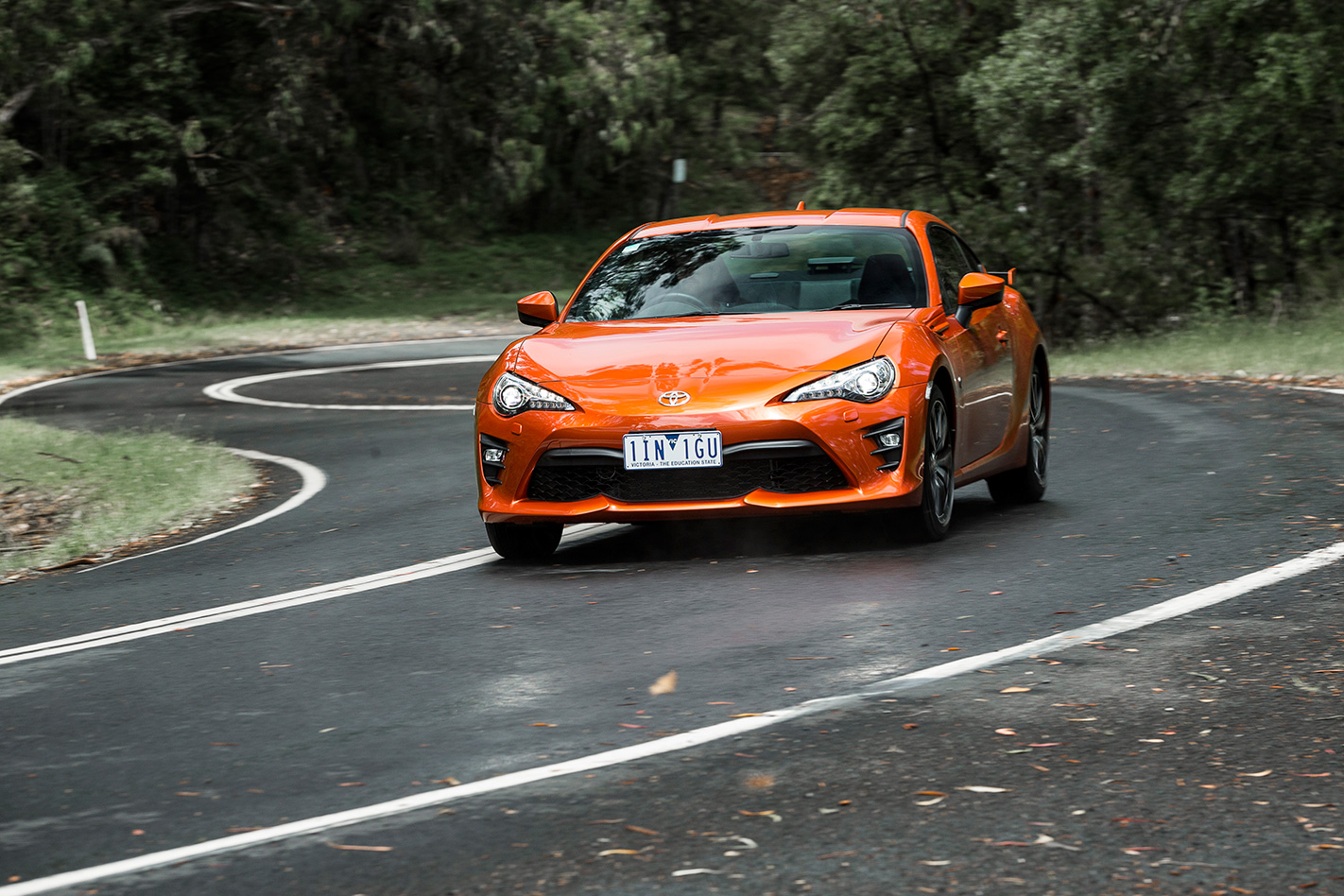
A used one. Even now there are so many for sale with full service histories, less than 75,000km in mint condition and owned by people who – not to judge books by their covers – would rarely go over 5000rpm. And the market is slowly filling with used 86s, driving down prices.
The cheapest used 86 I could find online was a 2013 GT for $16,500. In five years they will start dipping below $10,000. If your idea of driving thrills doesn’t require 600 horsepower, an 86 might be all the sports car you need. I’ve had as much fun driving an 86 (or BRZ) as I have had driving a Ferrari 488 or Porsche 911 GT3.
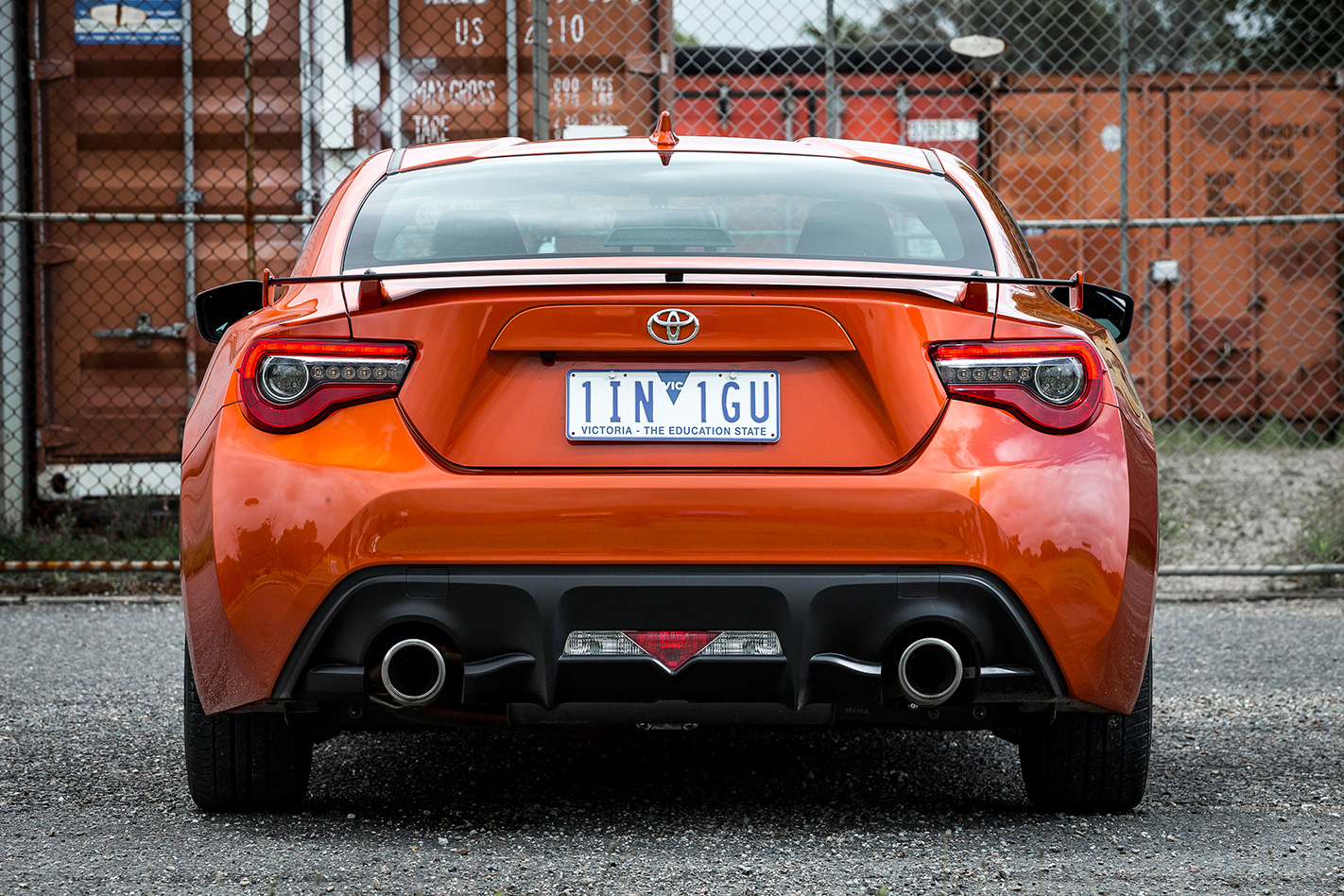
Or buy a GT, fit a half cage, upgrade the brakes and fit wheels in a size that can handle a tyre like the Michelin Pilot Sport Cup2 or Bridgestone RE-71R. Adding grip to an 86 should make it much more fun.
And if that doesn’t make sense to you, consider that a red flag that you might never be satisfied with the 86’s level of power.
MONTH FIVE
Fuel this month: 11.4l/100km Average: 10.2l/100km Distance this month: 245.8km Total distance: 4646km
Liked: This is as fun as cars get. Simple Disliked: Engine impossible to fall in love with

